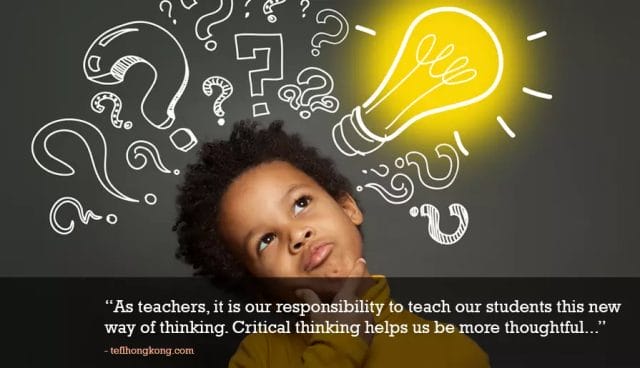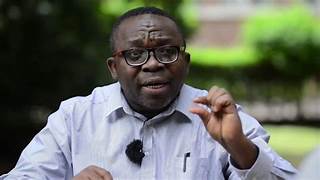Critical Thinking and Active Learning in Schools
By Leo Igwe
In September, the education commission of the catholic archdiocese of Owerri organized a back-to-school seminar and workshop for teachers. Over one thousand teachers attended the event. They invited me to facilitate one of the workshops. This back-to-school program was an event to mark the beginning of the 2023/24 academic year. The theme was: Developing Effective Teaching and Learning Processes: The Use of Blended Teaching Techniques In The 21st Century. The commission used the event to stress the Active Learning and Instructional Strategies (ALIS). As noted at the event, the ALIS are skills that ‘learners need to acquire and utilize for meaningful and authentic learning to take place’. The Active Learning and Instructional Strategies include critical thinking and problem-solving skills, creativity and innovation skills, collaboration skills, and communication skills. The ALIS are important skills, that if applied, would radically transform our school system.
However, beyond mentioning these skills and strategies, little or no effort was made to elaborate on them. There was little discussion on how these skills would foster active learning processes in schools. The real challenge in the educational system is not identifying these values and skills, but applying them, spelling out how they could fulfill stated purpose and objective. It does not suffice to declare that critical thinking is an active learning strategy. The real issue is in practice, in outlining how it could lead or enhance active learning, in using these skills to improve our school system.
This article explains the process. That is, how critical thinking skills would foster active learning processes in schools. First, we must admit that our school system is anything but active. The learning process is a monotonous exercise. It is mainly teacher-centered, not learner-centered. The teacher is the embodiment of knowledge, and up there in the hierarchy of learning. Learning is a process of memorization of whatever is taught. Rote learning is the mainstay of the school system. Learners focus on committing to memory whatever they are taught, or told in the classrooms and lecture halls. The ability to memorize and then regurgitate during examinations are the markers of intelligence. This school habit has made the learning process a passive exercise, sometimes an educational drudgery. However, this school culture would change if schools emphasized critical thinking skills; and if the subject of critical thinking was introduced from primary to tertiary levels.
To better situate this objective, it is important to make some clarifications. Critical thinking is often misconstrued. The misconception has hampered its application and inculcation in schools. While critical thinking is a problem-solving technique, critical reasoning is not essentially about solutions. A critical thinker is a problem creator, not a problem solver. Problem-solving is the focus of another active learning strategy, that is, creativity, and innovative thinking.
So, the main goal of critical thinking is to generate problems. It is an exercise in troubleshooting. Put differently, the objective is not to produce answers but to pose questions, interrogate issues, identify gaps, and point out faults, errors, limitations, and shortcomings.
To foster active learning, we must go beyond identifying critical thinking as an instructional strategy to making critical thinking intense in schools, colleges, and universities. We must introduce the subject of critical reasoning in primary and secondary schools. It is necessary to have critical thinking as a stand-alone discipline. Critical thinking must become a foundational subject that compliments other mental habits, such as verbal and quantitative reasoning in primary schools.
As a subject, critical thinking allows learners to immerse themselves in skills and programs that foster inquiry and make learners curiouser and curiouser. As a subject, learners devote some time to generating questions and problems, not finding answers and solutions. Students question whatever they teach them; learners question everything. The role of teachers is no longer to pose questions that students answer to test their knowledge. Teachers encourage learners to interrogate ideas and use such a mechanism to demonstrate intelligence and understanding. Students learn by questioning.
Teachers do not teach learners what to question or interrogate but to critically examine issues, and identify gaps and faults. Teachers guide and stimulate learners to question and challenge ideas, to freely express their doubts, and exercise their thoughts. In a critical thinking class, everything is an object of curiosity or exploration, including what the teacher says and does.
Furthermore, we can foster active learning by infusing critical thinking into other subjects. At the moment, learning is a passive exercise because subjects are taught in ways that leave little or no room for critical inquiry. Teachers deliver materials that learners memorize, not critically examine. But by infusing critical thinking into other subjects, this learning habit would change. Learners would become more engaged and involved in the learning process. Subject materials would become objects for questioning and interrogation. For instance, in primary schools, learners are taught that there are three main religions in Nigeria. There should be a facility to question this piece of information. As a part of the lesson, learners, not teachers, should be able to ask questions such as: why do we have three, not two, main religions? What makes these religions the main religions? How long have they been the main religions? When were they identified as the main religions? Who identified them as the main religions? Are there minority religions? What are they?
These questions could lead to more questions in reply. These questions could also lead to answers which would further provoke more questions. Given that many subjects are taught in schools and there is a limited time for each subject, it is expected that there would not be enough classroom time for critical thinking. So school boards should establish thought laboratories. As in the case of science or technology subjects, school managers should have rooms equipped for critical thinking experiments and exercises.
So, with the teaching of critical thinking as a subject or as infused into other subjects, the culture of learning would change.
The learning process would become more active and engaged.
Leo Igwe directs the Critical Thinking Social Empowerment Foundation. https://critthink.africa




